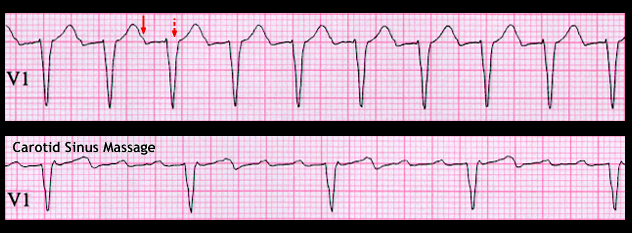
Another example is shown here. In the upper strip, the ventricular rate is 136. Although atrial deflections are not obvious, there is a suggestion of a deflection at the end of the T waves (solid arrow). If the rhythm were atrial flutter with 2:1 AV block, a second flutter wave would be expected at the end of the QRS complex (dotted arrow).
The effect of carotid massage is shown in the lower strip. It increased the AV block to 4:1 and allowed the flutter waves to become more obvious.
The examples shown here and on the previous page demonstrate the importance of considering the diagnosis of atrial flutter with 2:1 AV block whenever there is a regular narrow complex tachycardia with rate of 130-160 (the rule of 150). They also demonstrate the usefulness of maneuvers such as carotid artery massage to increase the block at the AV node and allow the flutter waves to become more easily recognized.
